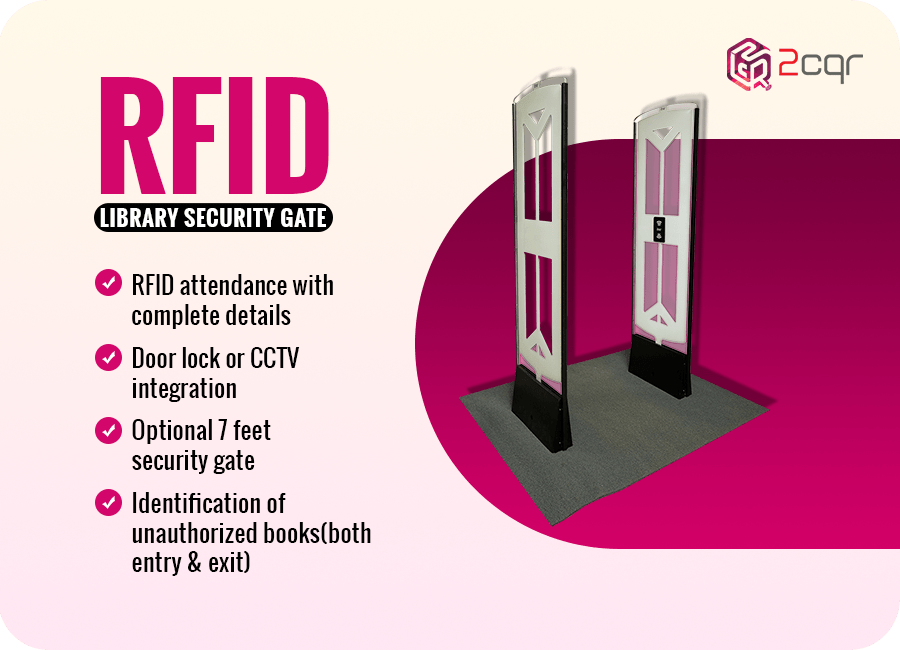
RFID Tags vs. Barcode Lines: A Game-Changer in Library Management
In the ever-evolving landscape of library management, the quest for efficiency and accuracy is never-ending. Two technologies stand at the forefront: RFID tags and barcode lines. Both serve the primary purpose of resource identification and tracking, but they do so in distinctive ways.
Despite barcode technology has been a cost-effective solutions in libraries for decades, RFID (Radio-Frequency Identification) solutions for library have been gaining momentum as the preferred choice.
Let’s delve into the key differences that demonstrate why RFID tags for library are increasingly favoured over traditional barcode lines.
Data Storage and Processing: The RFID Advantage
RFID tags are mirror of modern technology, comprising a microchip and antenna that work together. These tiny electronic devices store data within their microchips, and when exposed to a radio frequency signal within a specific band, they swiftly transmit this data to perform the necessary operations.
In contrast, barcode lines are far more complex. Data is represented as lines, numbers, or symbols, generated by barcode line printers and physically attached to items. Retrieving this data requires barcode scanners. The RFID technology advantage lies in its superior efficiency and data processing capabilities.
Distance of Operations: RFID’s Long Reach
Barcodes have a significant limitation – data processing occurs only when a barcode scanner is within visible range, and the barcode lines must be in the scanner’s line of sight. RFID tags, on the other hand, operate without the constraints of visibility.
Depending on the frequency of the signal, RFID tags in libraries can be read from distances ranging from 1 meter to an impressive 12 meters. This extended range ensures seamless data retrieval, even in busy library environments.
Reading: RFID Speeds Ahead
When it comes to reading capabilities, rfid for library takes the lead. RFID readers are revolutionising library management with the remarkable ability to scan and process multiple tags simultaneously without sacrificing accuracy or speed .
This feature is a game-changer in libraries with high transaction volumes, reducing wait times and enhancing operational efficiency. In contrast, barcode scanners can only read one barcode line at a time, inevitably leading to delays during multiple transactions.
Scalability and Reusability: RFID’s Flexibility
RFID tags are the epitome of scalability and reusability. They possess unique identification codes and are easily integrated into library databases. This flexibility makes RFID tags the top choice for large-scale libraries and institutions with plans for expansion.
Tags can be reused, allowing you to delete existing data and reprogram the tags as needed. This versatility is unmatched by barcode lines, which require the creation of individual lines and printing new labels for expansion. RFID tags are not only scalable but also eco-friendly, offering an edge in sustainability.
Durability: RFID Tags Stand Strong
In the battle of durability, RFID tags emerge victorious. They are built to withstand environmental factors that can cause wear and tear. Designed with protective materials, RFID tags boast an extended lifespan. Periodic maintenance can further ensure their longevity and performance.
Barcode lines, printed as labels and directly attached to library resources, are more susceptible to the rigors of the physical world. Their durability and lifespan depend on the quality of materials used for label printing.
In the end, RFID tags are changing the game in library management. Their advanced data processing, extended operational range, speed, scalability, reusability, and durability make them the preferred choice for modern libraries. As libraries continue to adapt to the digital age, RFID solutions stand as a testament to the power of innovation in streamlining operations, enhancing user experiences, and shaping the future of library management.



RFID Tags vs. Barcode Lines in Library Management is a revelation! The comparison is insightful, offering a clear understanding of the game-changing technologies. A valuable resource for libraries navigating the digital age.